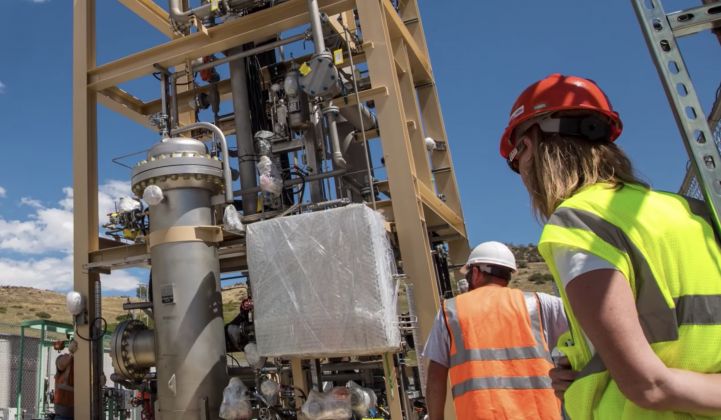As grids get saturated with wind and solar electricity, there’s increasing pressure to find new ways to store that energy across daily, monthly or seasonal variations.
Could the answer be a billion-year-old microorganism?
The National Renewable Energy Laboratory and SoCalGas are currently running a new bioreactor that could turn renewable electrons into renewable methane — allowing excess generation to be “stored” in existing natural-gas pipelines.
The system relies on an ancient microorganism that ferments hydrogen and carbon dioxide and turns it into methane. By feeding the bugs hydrogen from renewable resources and CO2 from industrial sources, companies like SoCalGas could harness a new supply of renewable natural gas.
NREL has been testing the process in the lab for years. It finally built a larger-scale version of the bioreactor — and we got to check it out.
We sent producer Catherine Jaffee to NREL’s lab in Golden, Colorado to take a look. We’ll learn how it works in the first part of the episode.
In the second half of the episode, we talk with NREL’s Kevin Harrison and SoCalGas’ Ron Kent about how the system is performing so far.
Read previous coverage about the first stages of the technology:
- GTM: Novel Power-to-Gas Tech Begins Testing in the U.S.
- NREL: Undersea Microbes Provide Path to Energy Storage
Learn more about all the world-changing research on clean energy happening at NREL.




